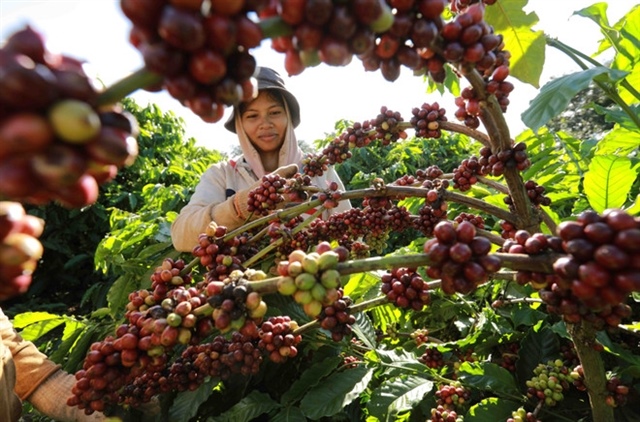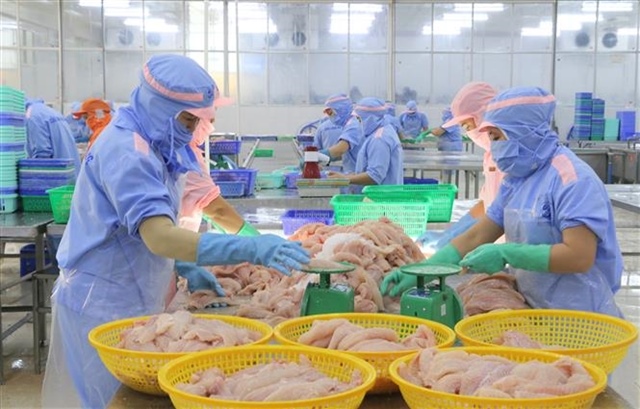Tra fish industry grapples with export difficulties
Tra fish industry grapples with export difficulties
The domestic tra fish industry has overcome several obstacles to achieve its export target this year, and so, needs the State’s support to establish a healthy business environment.

According to the Viet Nam Association of Seafood Exporters and Producers (VASEP), in the first three months of this year, the total export of tra fish in the country was valued at US$430 million, a year-on-year increase of 16 per cent.
Although the total national tra fish exports grew strongly, the exports to the European Union (EU) decreased sharply. Exports to the United States (US) were also hampered by catfish inspection programme and a high anti-dumping tariff.
Ong Hang Van, deputy general director of Truong Giang Seafood Joint Stock Company, said that in the first three months, the supply of raw materials for export processing was low and their prices were high. These posed several difficulties. However, most export markets of Vietnamese tra fish accepted the increase in the export price. The price was 30 per cent higher than that in the same period last year.
For example, some common types of tra fish export products were sold at around $3 per kilo, higher than the $2.2 year on year. The increase in the export price was one of the main factors supporting the surge in the total export value of tra fish, against the same period last year.
Ha Van Tinh, director of Dai Thanh Co, Ltd, said exports to other markets had many advantages in terms of volume and value.
In the first three months of this year, the tra fish industry faced lower supply of raw materials and higher production cost due to a surge in the price of raw materials. Therefore, the tra fish supply was only enough to meet the demand in the traditional export markets of the enterprises, he said.
Moreover, the US imposed anti-dumping duty of $2.39 to $7.74 per kilogramme on frozen tra fish fillets imported from Viet Nam between August 1, 2015, and July 31, 2016, following its 13th administrative review (POR 13).
In addition to this, the US catfish inspection programme also affected the export of Vietnamese tra fish to this market.
Truong Dinh Hoe, VASEP general secretary, said the US’s high anti-dumping tariff on Vietnamese tra fish was not the first, but the tariff rate in the POR13 was too high, beyond the imagination of the local business community. With this tariff, it was difficult to export catfish to the US market. However, depending on the US market demand, the local enterprises can coordinate with the US import partners to export other kinds of tra fish products, excluding tra fish fillet that was slapped with a high tariff.
On the other hand, to ensure the export target this year meets at least $2 billion in value, Hoe said the local enterprises can increase the export value of tra fish by developing high-quality processed tra fish products and improving the added value of tra fish exports in the future.
Tra fish exports to China
According to the enterprises, the growth in tra fish exports to other markets such as China, Japan and the ASEAN, can support the export growth of the industry and offset the decline in the major markets of the EU and the US. However, a strong export growth to the Chinese market has a hidden risk.
Hoe said the nation would gain with a strong growth in tra fish exports to China because the businesses have focused on enhancing value, quality and product image while keeping the prices competitive. However, the enterprises should solve negative factors in price competition to have a sustainable development in this market in the future.
In the first quarter of this year, the value of Viet Nam’s tra fish exports to China saw a year-on-year increase of 42 per cent, surpassing the US to become the largest export market for Vietnamese tra fish.
To maintain the stability of tra fish exports to China and avoid dependence on one market, VASEP has proposed that the Ministry of Agriculture and Rural Development manage the quality of tra fish exports to China in the next three months, when the supply of tra fish in the domestic market will be higher.
According to the proposal, the ministry should grant product quality certificates before transporting the tra fish exports to China via road at the border gates.
The VASEP also requested the ministry to conduct a programme to inspect the tra fish processing facilities and ensure the quality of tra fish products are maintained. At the same time, the State should undertake a long-term development strategy to export tra fish to China and conduct marketing and advertisement programmes for the product in this large market.
























